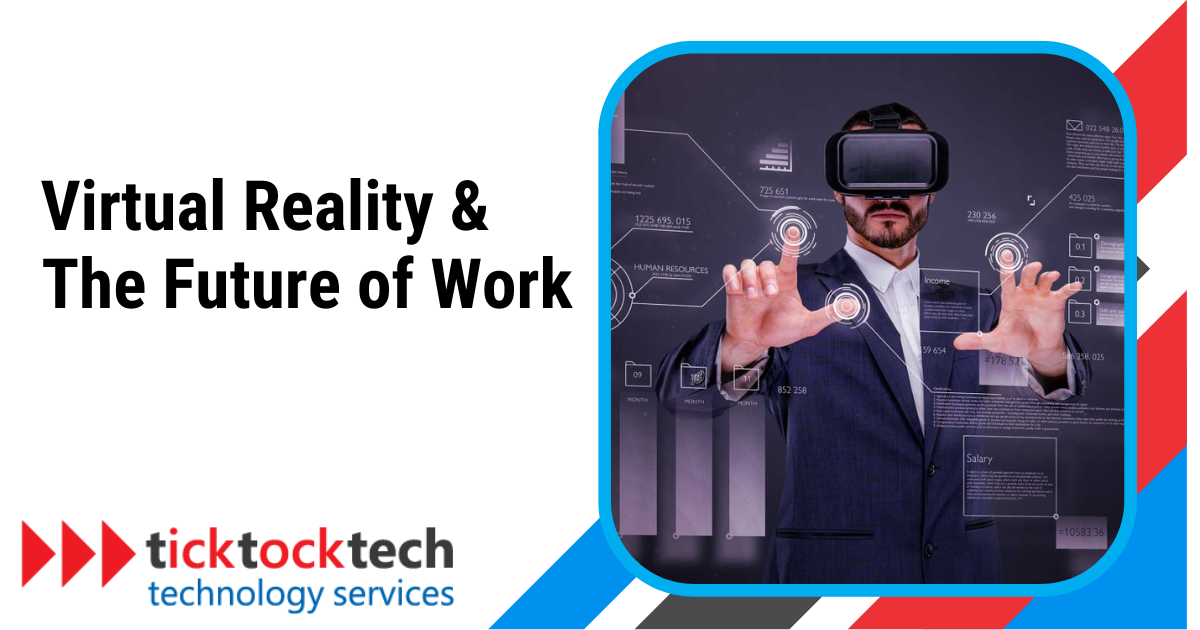Over the past three years, many office workers have shifted to remote setups. While we miss interacting in person, it’s clear that hybrid and remote work models are here to stay. Remote work offers the ability to work from any location, yet it also brings challenges such as loneliness, isolation, or distractions at home. We need advanced tools to enhance our productivity, help us stay connected with colleagues, and embrace the flexibility of working remotely. This is where the exceptional capabilities of Virtual Reality (VR) come in.
What is Virtual Reality?
Virtual Reality, or VR, is an immersive-simulated experience that can either mimic the real world or create entirely fantastical scenarios. It utilizes computer technology to generate a virtual environment where users feel as though they are physically present.
The virtual world is created through high-resolution displays, precise tracking technology, and realistic audio. This combination of sensory stimuli creates a sense of presence. Through motion-tracking sensors and handheld controllers, you can interact with your virtual environment, manipulate items, move around, and even participate in virtual conversations.
VR is not just for entertainment; it has many practical applications. It can also be used for education, training, and therapy. For example, students can learn about history by exploring virtual ancient ruins, medical students can practice surgeries, and people with anxiety disorders can confront their fears in a safe environment.
How are VR and AR changing the workplace?
Virtual reality (VR) and augmented reality (AR) transform our technology interaction. As these technologies continue to evolve, their impact on the workplace, especially in training, will continue to increase. Presently, over 26% of organizations utilize VR and AR for employee training, and it appears that this trend will continue to grow in the future.
Immersing employees in a virtual space reduces distractions, which boosts productivity and efficiency. The capacity to interact with virtual data and objects through natural movements also streamlines workflow and enhances efficiency.
Moreover, VR and AR facilitate remote collaboration, removing physical distance as a barrier and enabling teams to cooperate in real-time. Whether it’s through virtual meetings, design reviews, or joint project efforts, these technologies improve communication, foster knowledge exchange, and strengthen team dynamics.
Remote collaboration not only saves on travel costs and time but also allows companies to access a worldwide talent pool. Additionally, these technologies focus on inclusivity, ensuring that people with disabilities can fully engage and contribute their unique insights and skills to projects.
Current applications of VR and AR in the workplace
Virtual reality (VR) and augmented reality (AR) are transforming the way we work and learn. In the healthcare industry, VR is used to train medical professionals, allowing them to practice complex procedures and surgeries in a virtual environment. This helps them to improve their skills and reduce the risk of errors during real-life operations.
In other industries, such as aviation, manufacturing, and defense, VR is used for training simulations. Pilots can practice emergency procedures and fly virtual planes, while industrial workers can learn about complex machinery and hazardous scenarios in a safe environment. Military personnel can engage in virtual combat training, preparing for a range of scenarios they may encounter on the battlefield.
Moreover, VR is commonly used in product development to create and test virtual prototypes. This process helps designers and manufacturers visualize and refine products before they go into production, identifying any design flaws early. It also involves potential users in the design process through virtual simulations and gathering feedback.
The Future of Work with Virtual Reality
Looking ahead, virtual reality (VR) is about to transform both our work and personal lives. Current VR technologies, like the Quest 2, are offering a sneak peek into what’s possible. They enhance productivity by providing an immersive, distraction-free workspace that extends beyond the confines of physical desk space. Moreover, VR enables effective collaboration, allowing remote work to feel as interactive as being in the same room.
The focus now shifts towards enhancing VR’s capacity to improve work efficiency and productivity. Significant investments are being made in key areas, such as:
- Personal productivity: VR will make multi-tasking and personal productivity more seamless.
- Teamwork and collaboration: VR will enable richer teamwork and collaboration with a true sense of presence.
- Company utilization: VR will empower companies to use VR in new ways, working towards the future.
With VR, the future of work is bright, and we’re excited to see the next steps towards a more immersive and productive work environment.

